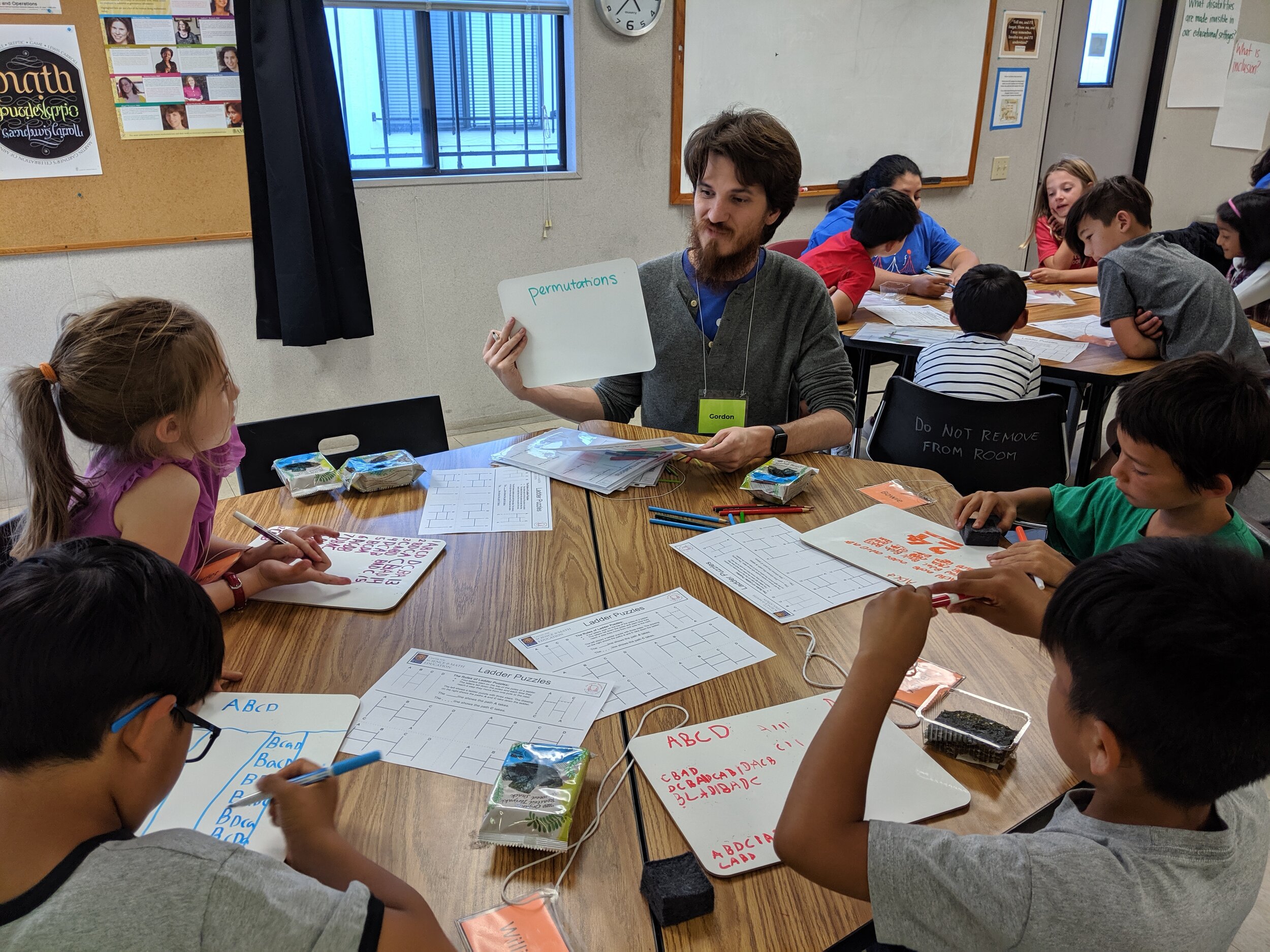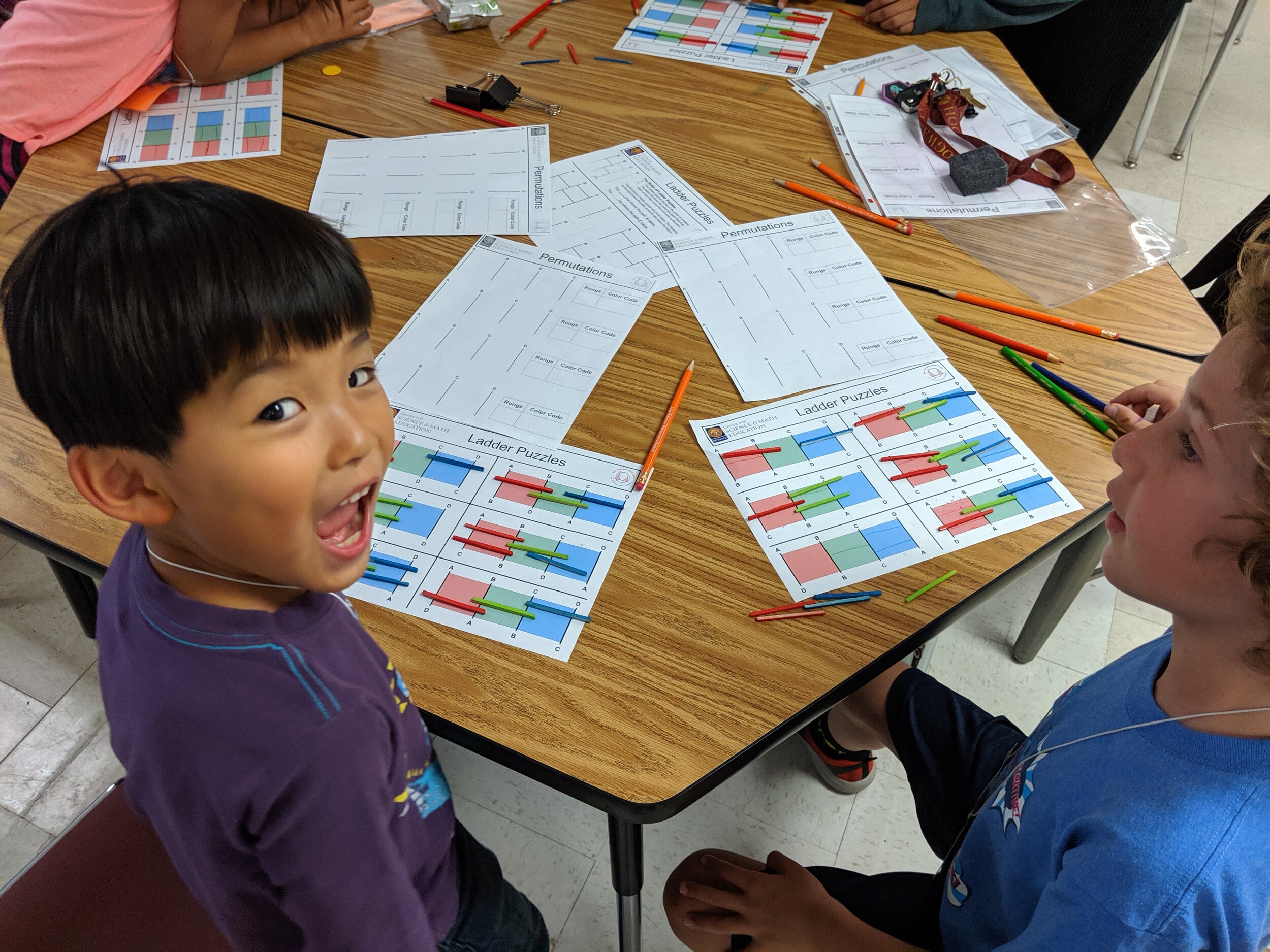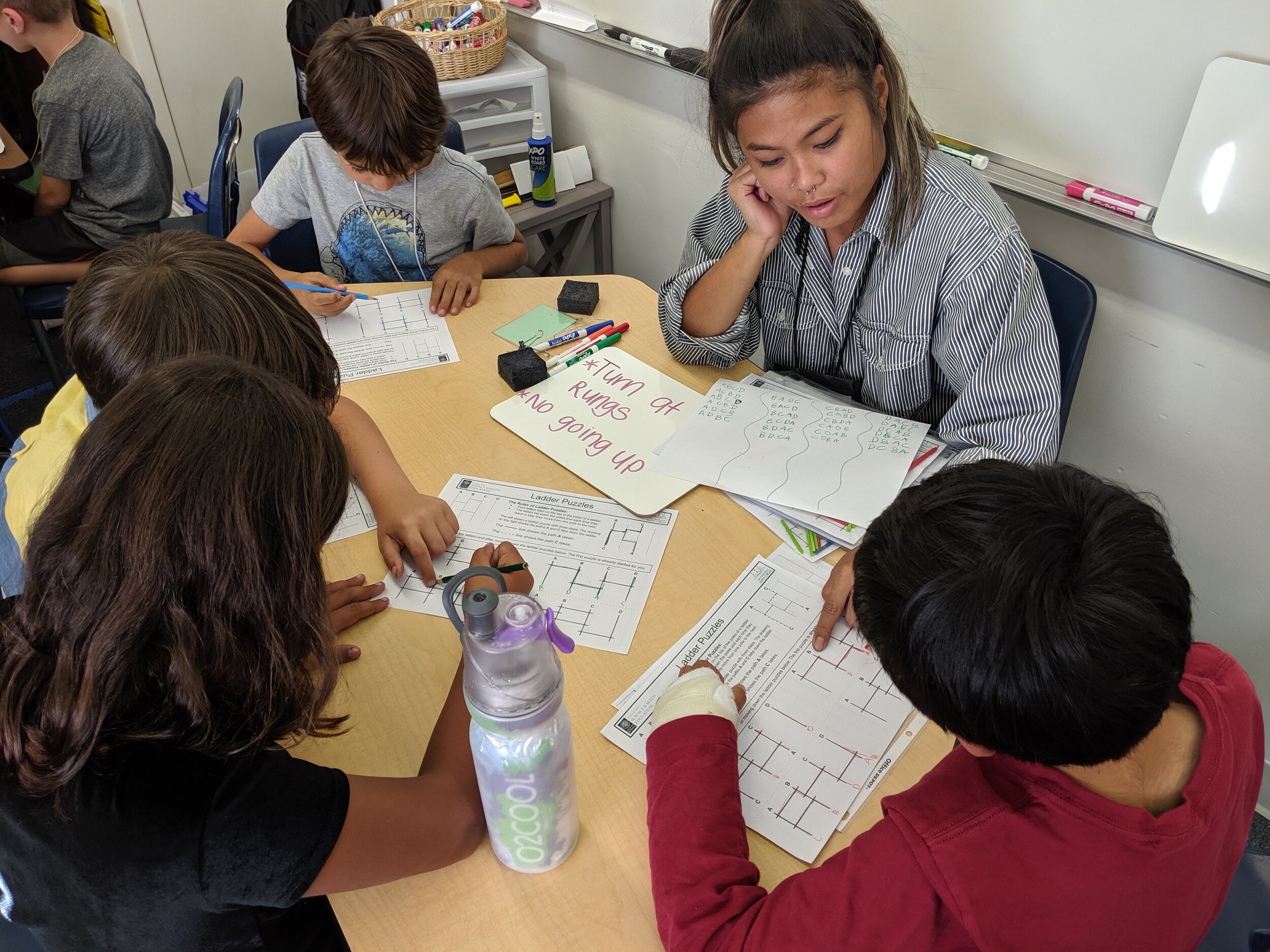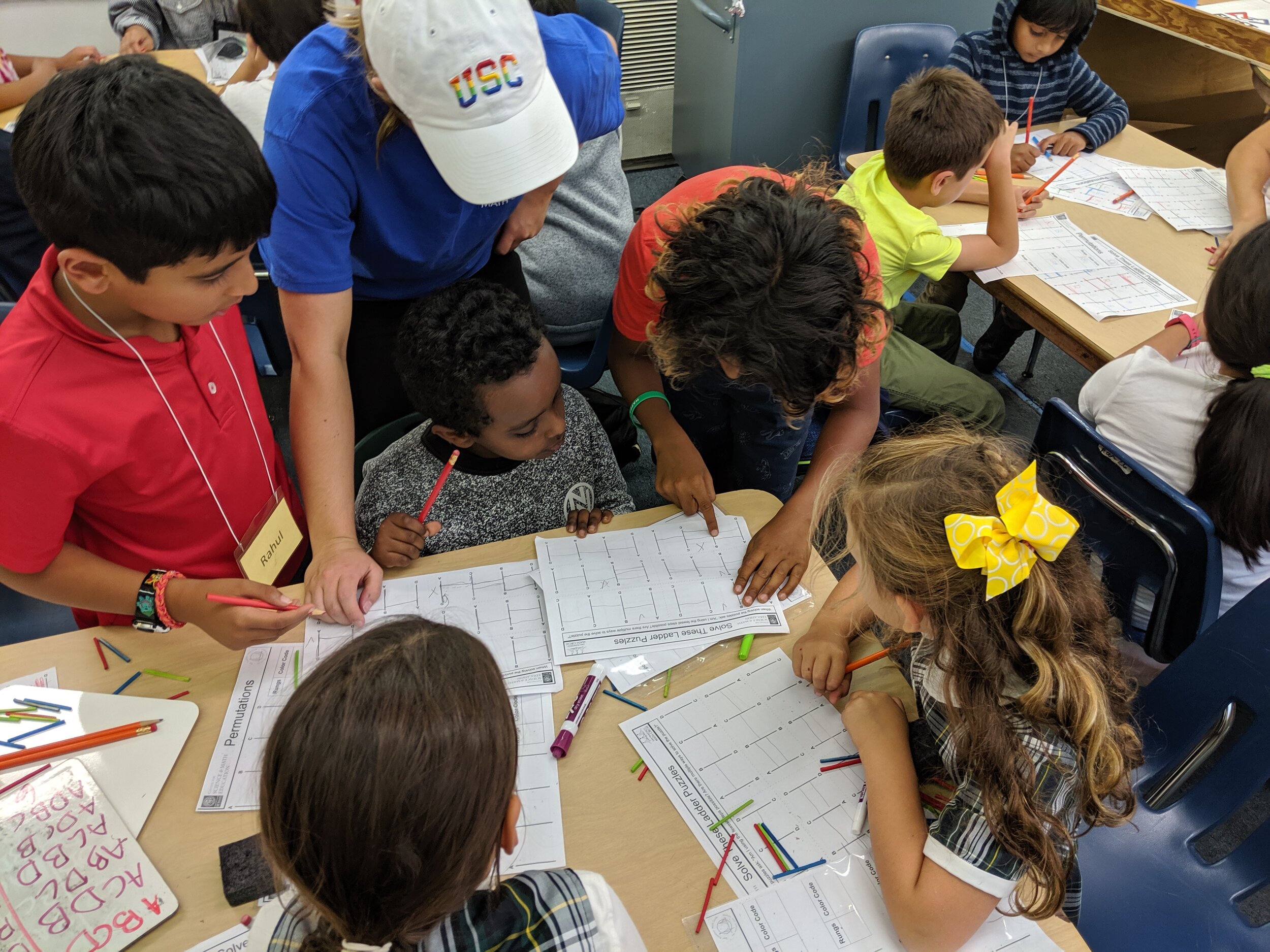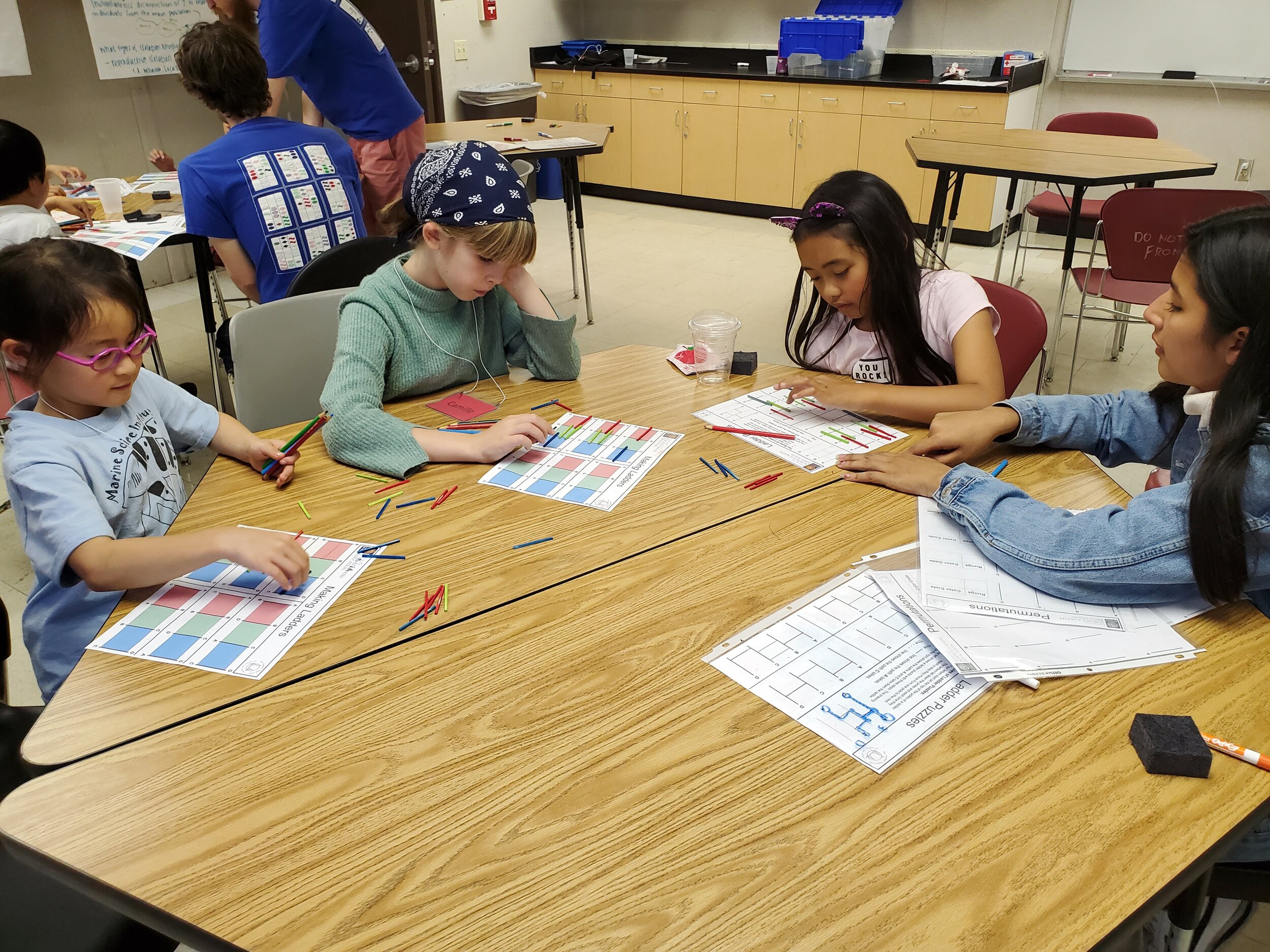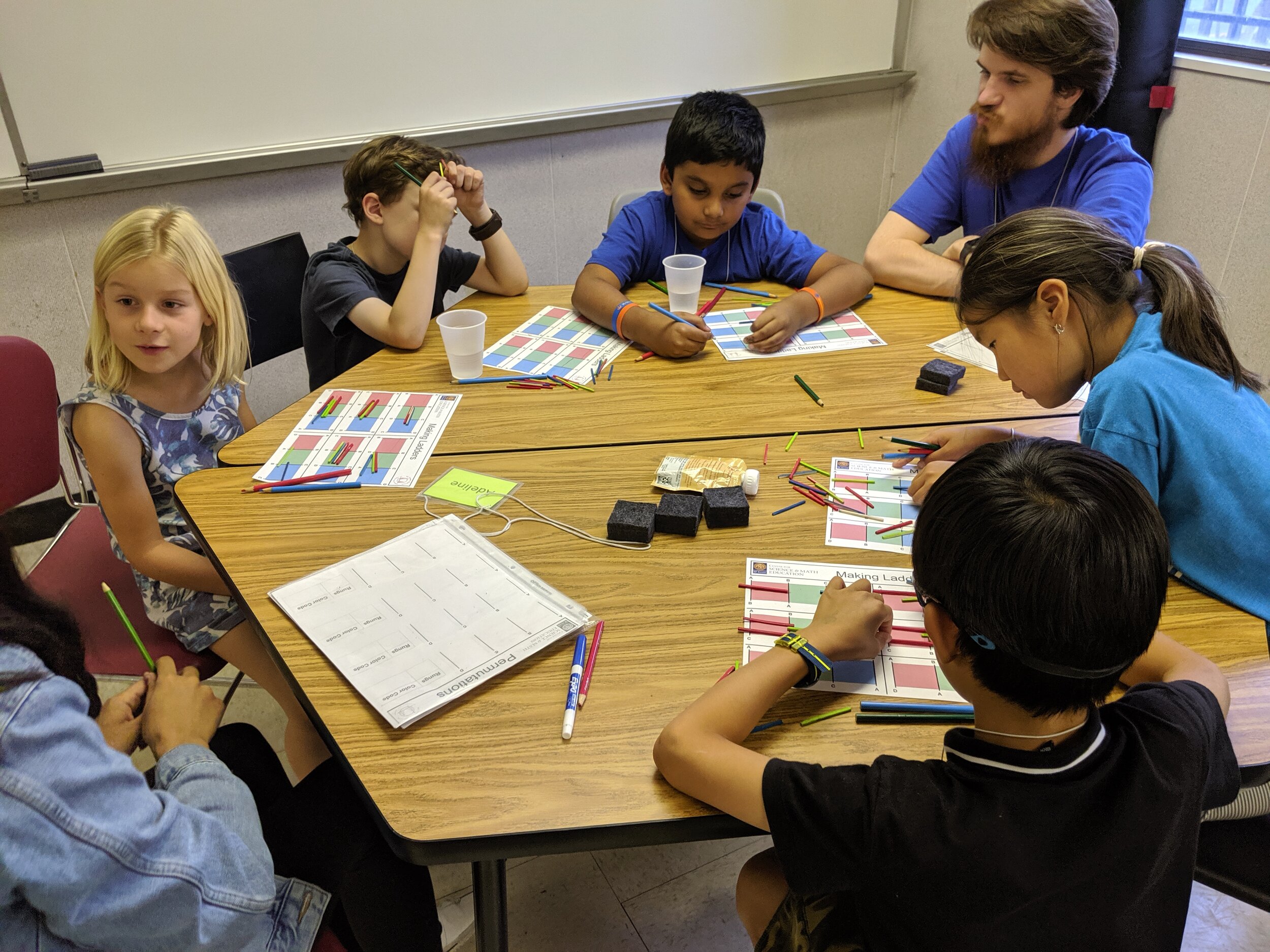Ladder Puzzles
How it works
The “ladders” in this activity produce permutations (reorderings) of letters. Each ladder has a set of posts (vertical lines) and rungs (horizontal lines between adjacent posts). To start, there is a different letter at the top of each post (in alphabetical order). Letters then slide down the posts (no going up), and when they reach a rung, they must turn and cross that rung to the other post, then continue sliding down. The order the letters are in at the bottom of the ladder is the permutation the ladder produces.
For example, the ladder in the image above produces the permutation CBDA.
In this activity, students start by finding all of the different permutations of the letters A, B, C, and D. Next, they learn about ladders and practice figuring out how a given ladder produces a permutation of the letters A, B, C, and D. Then they are given specific permutations and they try to find ladders that produce these permutations.
Sliding Down Ladders handout
Making Ladders handout
Permutations handout
Why we like this activity:
It’s fun! Students enjoy exploring and making ladders.
It helps to develop algorithmic reasoning.
It requires students to engage in mathematical habits of mind:
Finding and using strategies to solve various ladder puzzles.
Finding similarities and differences between different ladders (for example, between different ladders that produce the same permutation).
It has a low floor and high ceiling: Students can get started solving ladder puzzles by trial and error, but there is a lot to explore and discover.
To find out more about our approach to math and math education, click here.


